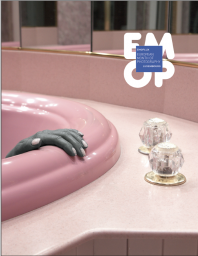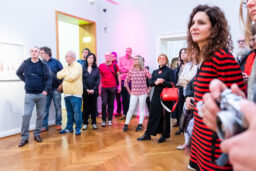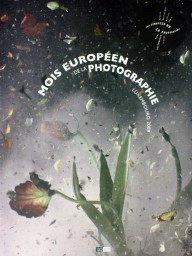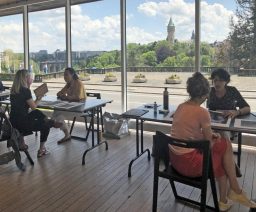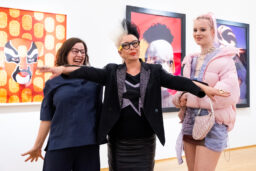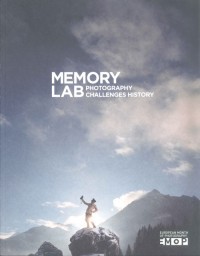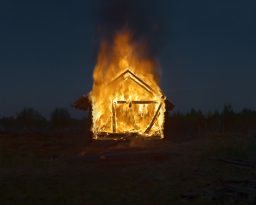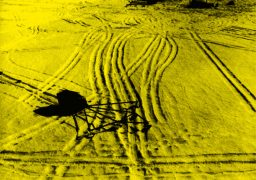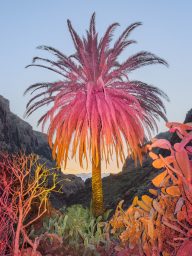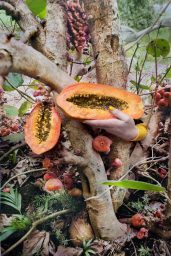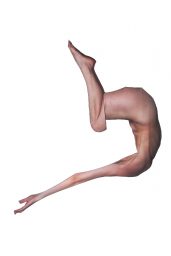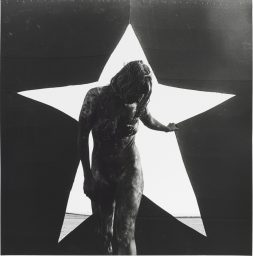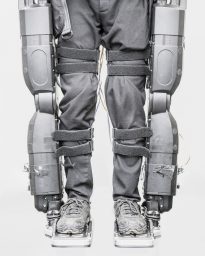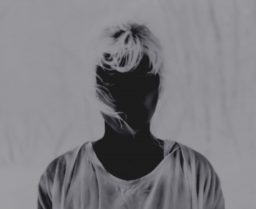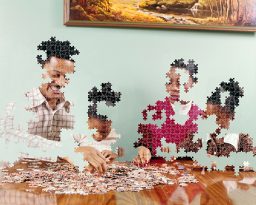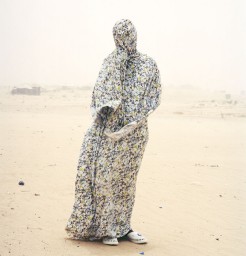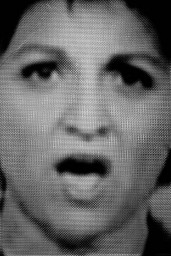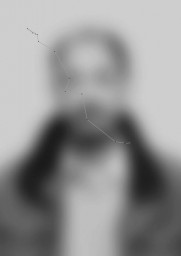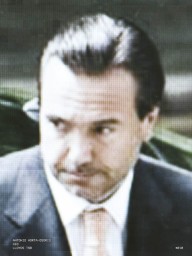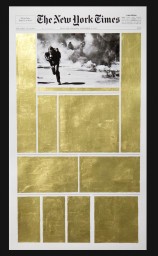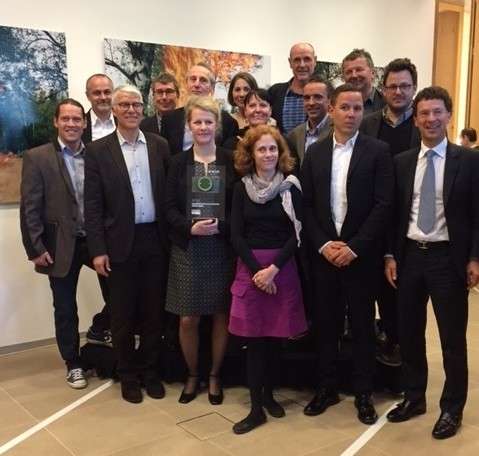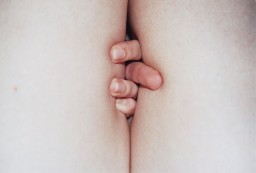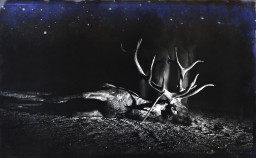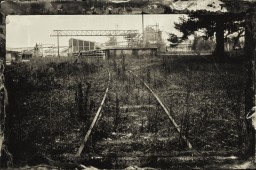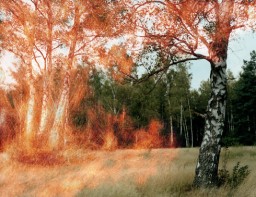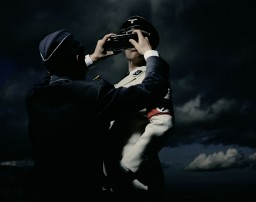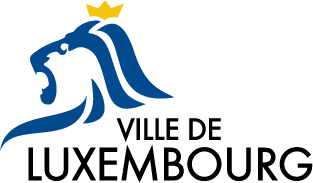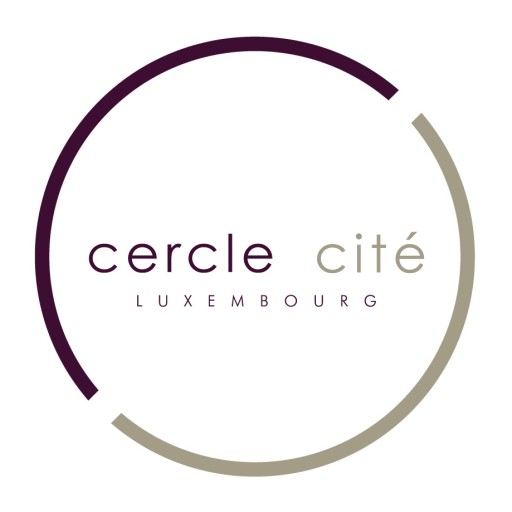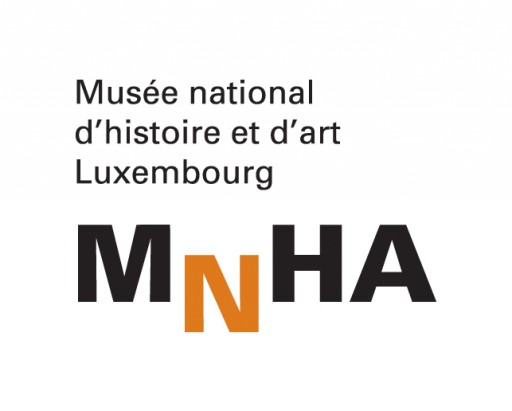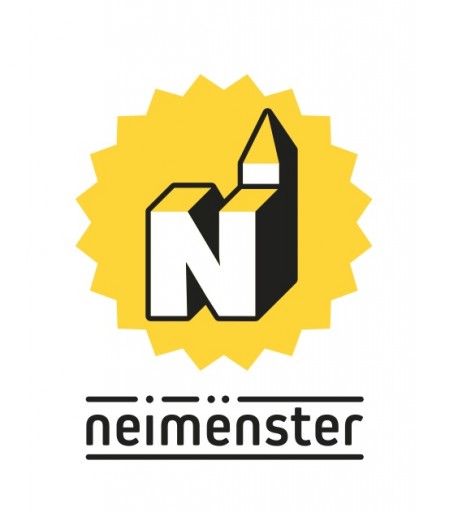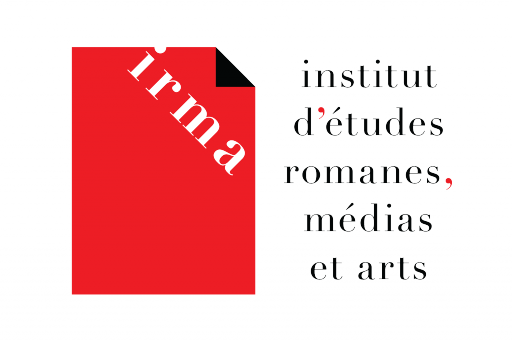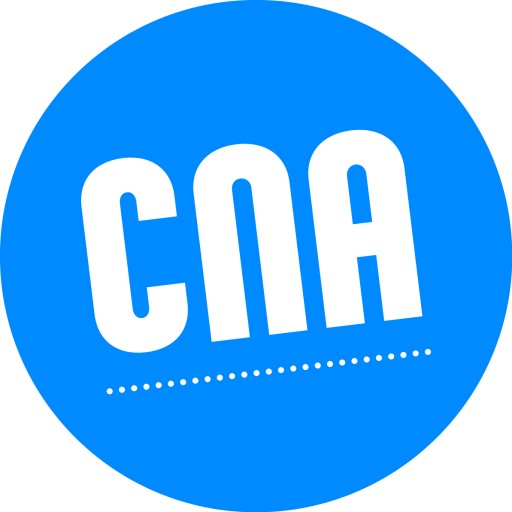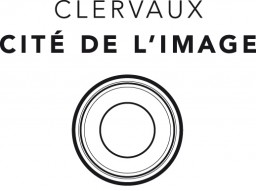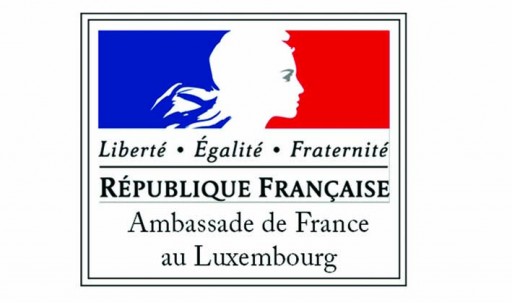info/actualités
mois européen de la photographie (emoplux)
Le Festival du Mois Européen de la Photo au Luxembourg (emoplux) est un festival international majeur dédié à la photographie et à la culture visuelle. Initié en 2006 par Café-Crème asbl en partenariat avec les principales institutions photographiques de Paris, Berlin et Vienne, et grâce à la participation de la quasi-totalité des institutions artistiques luxembourgeoises, le festival a pu offrir depuis une plateforme internationale diversifiée pour l’échange d’idées, l’expression artistique et l’engagement avec la photographie sous toutes ses formes.
Le festival rassemble des artistes et photographes émergents et confirmés, principalement européens, dans le but de refléter la diversité de la photographie de notre temps.
Explorant une variété de perspectives culturelles, artistiques, sociales et politiques, le festival considère un large éventail de genres photographiques, partant d’une photographie plasticienne, conceptuelle et documentaire jusqu’à d’autres formes comme la vidéo et l’installation. Sur les 26 expositions présentées en 2023, six en particulier l’étaient sous la direction artistique ou co-direction de l’association à savoir celles au Nationalmusée, Casino Luxembourg, Cercle Cité, Musée Vauban, neimënster et Arendt House. Depuis 2015, nous consacrons beaucoup d’efforts à la mise en place d’une portfolio review réservée aux artistes locaux et des régions avoisinantes d’Allemagne, de Belgique et de France permettant des moments d’échange entre artistes, critiques et curateurs. Le festival donne l’occasion aux artistes en devenir de présenter leur travail aux conservateurs de musées et aux directeurs de festivals. En outre, tous les deux ans, le cabinet d’avocats Arendt & Medernach décerne un prix ( European Month of Photography Arendt Award) à un jeune artiste talentueux, lui permettant d’entrer dans l’une des collections photographiques les plus prestigieuses du Luxembourg.”
Emoplux 2023 (Rethinking Identity) a eu lieu en mai et juin dans une vingtaine de lieux à travers le pays, principalement dans la capitale mais aussi à Clervaux, Dudelange, Ettelbrück et la ville voisine de Trèves (Allemagne).
Les journées de rencontres – Emop days – avec une série de vernissages, la portfolio review et la remise du prix Emop Arendt award ont eu lieu du 10 au 13 mai 2023.
Mois européen de la photographie Luxembourg 2023
Après Rethinking Nature (thème de 2021), les curateurs de La 9eme édition du Mois européen de la photographie Luxembourg (emoplux 2023) ont choisi le thème de Rethinking Identity. Cette deuxième édition de la trilogie “Rethinking… ” met l’accent sur une thématique d’actualité dans le contexte de la photographie contemporaine émergente.Plus que jamais, la photographie a un rôle important à jouer dans la réflexion autour des questions de construction et de déconstruction des identités véhiculées par les réseaux sociaux.
Aujourd’hui, aux problématiques du genre s’ajoutent des pensées plus globales qui engendrent de nouvelles positions par rapport aux identités politiques, culturels et sociales.
emop days
Pour cette 9eme édition, une majorité de vernissages, la portfolio review devant public, la remise du prix du Mois européen de la photographie Arendt award, auront lieu du 10 au 13 mai .
prix arendt du mois européen de la photographie
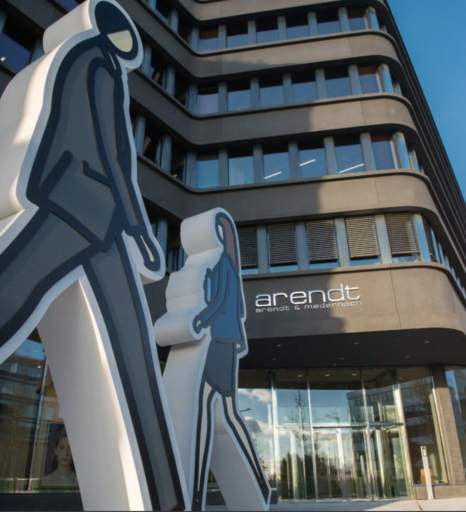
Depuis 2012, le cabinet d’avocats luxembourgeois Arendt & Medernach, avec des bureaux à Hong Kong, Londres et New York, apporte son soutien à la photographie. Ces initiatives ont considérablement contribué à développer un goût pour la photographie et l’art contemporain en général au Luxembourg.
Le cabinet d’avocats Arendt & Medernach récompense tous les deux ans un artiste visuel qui fait partie des expositions communes que le réseau EMOP gère à travers l’Europe.
Pour Arendt & Medernach, l’art contemporain est une passion. Depuis plusieurs années, l’étude s’est prononcée plus particulièrement en faveur de l’art photographique en exposant des artistes du monde entier dans ses locaux situés à Luxembourg-Kirchberg. Des œuvres d’artistes renommés comme David La Chapelle, Beat Streuli, Marie-Jo Lafontaine, Candida Höfer, Günther Förg et Valérie Belin ont été exposées avec des œuvres de jeunes talents. Progressivement, Arendt & Medernach a construit sa propre collection d’art, représentative des principaux courants de la photographie contemporaine.
Fidèle à sa passion, Arendt & Medernach souhaite encourager l’ouverture d’esprit, la diversité et le partage des émotions. Nous sommes reconnaissants envers Arendt & Medernach d’être un partenaire incontournable du «Mois européen de la photographie Luxembourg».
Le Prix Arendt: Historique
prix arendt du mois européen de la photographie 2023
Les cinq artistes nominés pour l’EMoP Arendt Award sur le thème Rethinking Identity empruntent des chemins différents à travers des réinterprétations singulières qui dépassent les clichés classiques de l’identité.
Dans une vision plus individuelle, Cihan Cakmak aborde les réminiscences d’une fracture identitaire kurde en créant des situations oniriques personnelles défiant la fragmentation sociale et l’isolement qu’elle a subis. En utilisant le corps féminin comme instrument de pouvoir, Ulla Deventer, à travers une esthétique particulière qui puise à la fois dans la documentation photographique et l’installation d’art contemporain, déconstruit les stéréotypes sur la prostitution. Les représentations de soi déconstruites et les perceptions fragmentaires du corps de Karolina Wojtas créent de nouvelles fictions qui interrogent les concepts de temps et d’espace dans une perspective sociale et relationnelle. Dans un autre registre, le travail de Livia Melzi confronte l’archive et les représentations autour de l’identité à travers ses recherches sur les capes Tupinambá, issues des tribus guerrières Tupi de la côte brésilienne et utilisées à l’origine pour des rituels anthropophages.La question de l’identité culturelle se mêle à des éléments autobiographiques dans l’œuvre multimédia de Jojo Gronostay (né en Allemagne avec des racines ghanéennes). Objets et images d’objets et fragments de corps sont décontextualisés et présentés à une échelle inhabituelle jouant sur les interrelations entre colonialisme et capitalisme.
Ces postures artistiques émergentes expriment différents types d’identités, qu’elles soient individuelles, familiales, culturelles ou territoriales.
Membres du jury EMoP en 2022 : Paul di Felice (président/Luxb), Emmanuelle Halkin (Paris, Fet’Art-Circulations), Verena Kaspar-Eisert (FotoWien), Rui Prata (Imago Lisboa), Maren Lübbke-Tidow (Kulturprojekte Berlin), Delphine Dumont (Bruxelles / Hangar).
prix arendt du mois européen de la photographie 2021
Les cinq artistes présélectionnés s’intéressent à la complexité de la corrélation entre l’homme et la nature et réfléchissent chacun à sa façon sur les nouvelles représentations et fictions du paysage.
Avec les photographies de Vanja Bucan nous entrons dans un univers fantasmagorique et onirique illustrant un écosystème disposé de manière inhabituelle. Chez Inka&Niclas les visions perturbées du paysage sont de l’ordre de l’étrange et du sublime, alors que les photographies des villages ruraux russes en ruine de Danila Tkachenko témoignent d’une époque historique révolue. Chez Anastasia Mituykova comme chez Maria Magdalena Ianchis, les représentations des icebergs et paysages de glace du Groënland se déclinent sous différentes formes d’images mentales et réelles qui se présentent dans des installations où l’archive et la mémoire tentent de représenter les stigmates de l’Anthropocène et de combler le vide laissé par l’impossibilité de photographier la complexité de la nature.
Le jury EMoP était composé de Paul di Felice (président / Luxbg), Bettina Leidl (vice-présidente / Vienne) et des membres du comité Emmanuelle Halkin (Paris), Verena Kaspar- Eisert (Vienne) et Rui Prata (Lisbonne).
prix arendt du mois européen de la photographie 2019
Les nominés pour le prix du Mois européen de la photographie de Arendt & Medernach étaient : Carina Brandes (Allemagne), Matthieu Gafsou (Suisse), Weronika Gesicka (Pologne) Alix Marie (France), SMITH (France). La lauréate de l’édition 2019 est Weronika Gesicka.
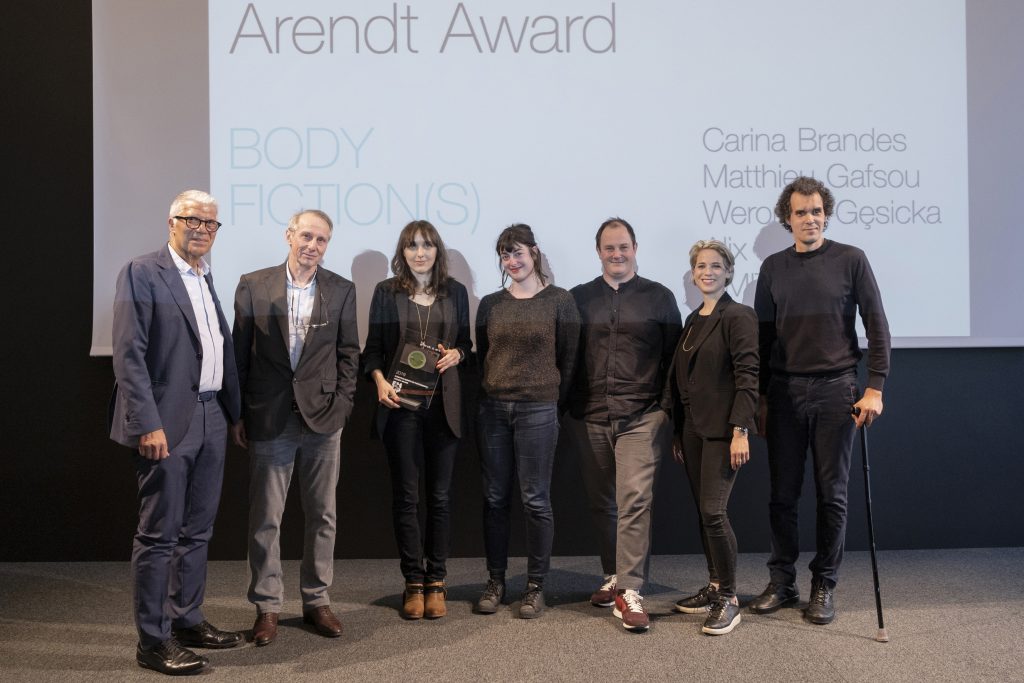
Le jury de cette année était composé de cinq membres du bureau des commissaires du Mois européen de la photographie à savoir Paul di Felice (Luxembourg), Verena Kaspar-Eisert (Kunst Haus Vienne), Jean-Luc Soret (Maison européenne de la photographie, Paris), Branislav Stepanek ( Central European House of Photography,Bratislava), Balázs Zoltán Tóth (Hungarian Museum of Photography, Kecskemet).
L’édition 2019 du Prix du Mois européen de la photographie Arendt, présentait le travail de cinq jeunes artistes autour des notions de corps et fiction sous le titre générique de Bodyfiction(s).
Smith, selon les périodes Bogdan ou Dorothée, plonge le spectateur dans son univers particulier à travers ses séries photographiques où l’effacement des genres est volontairement accentuée. Le travail photographique en noir et blanc de l’Allemande Carina Brandes prend son essor dans l’insolite gestualité de la quotidienneté à partir de situations insensées où l’artiste en autoreprésentation croise des figures de l’histoire de la photographie et de l’art ainsi que des animaux dans des lieux abandonnés parfois improbables mais souvent prosaïques. La jeune artiste polonaise Weronika Gesicka construit son imaginaire à partir de recherches et stratégies d’exploration de mécanismes sur la mémoire et les représentations familiales d’autres époques. La photographie chez la Française Alix Marie sort du cadre bidimensionnel pour devenir sculpture, relief, objet et installation. Son sujet de prédilection est la relation que nous avons avec notre propre corps mais aussi notre attitude par rapport à ses représentations à travers des processus d’objectivation, de magnification et d’accumulation. A l’inverse des préoccupations intérieures, introspectives et intimistes, le photographe suisse Mathieu Gafsou observe et analyse l’évolution tout aussi inquiétante de notre société en prenant comme perspective les enjeux du « transhumanisme ».
prix arendt du mois européen de la photo 2017
Etaient pré-selectionnés pour le prix Arendt 2017 du Mois européen de la photographie, les photographes suivants: Samuel Gratacap, Jure Kastelic, Aida Silvestri, Daniel Mayrit, Panos Tsagaris.
Chacun de ces artistes a interprété à sa façon thème de cette année “À la recherche des nuages - La photographie contemporaine en temps de conflits”.
Le jeune français Samuel Gratacap s’intéresse aux problématiques liées à la migration et aux lieux de transit. Son travail, à la fois sensible et objectif, se situe à la croisée du photojournalisme et de l’art contemporain.
L’artiste slovène Jure Kastelic traite également de l’image en relation avec le temps. Les photographies de sa série “Death Reporters” sont tirées d’images fixes télévisées qui se concentrent sur le moment même où le présentateur annonce le nombre de victimes lors d’événements catastrophiques dans le monde. Il déconstruit ainsi les stratégies de communication médiatique. C’est également le cas dans l’œuvre de Daniel Mayrit, dont les portraits flous (prises par des caméras de surveillance) sont des images de certaines des personnes les plus influentes de Londres. Ils contredisent l’image « glamour » de ces personnalités, qui sont soudainement la cible de caméras de surveillance, exactement comme des criminels.
Dans la série de couvertures de magazines intitulée “For Between Light and Darkness We Stand”, l’artiste grec Panos Tsagaris interrompt le flot de l’actualité en la remplaçant par une œuvre symbolique reflétant ce qu’il appelle “la déconnexion progressive de la matérialité et le lent éveil la conscience.”
Dans un tout autre registre, le travail d’Aida Silvestri, originaire d’Erythrée, s’inscrit dans une quête personnelle et altruiste centrée sur le sort des réfugiés africains, qu’elle présente sous forme de portraits floutés et avec les traces de leurs parcours brodés directement sur les photographies.La cérémonie de remise des prix a eu lieu le 26 avril dans les locaux de l’étude Arendt & Medernach à Luxembourg-Kirchberg.
Interviews des 5 artists sélectionnés pour le prix Arendt su Mois européen de la photographie sur le thème de “Looking for the Clouds” , exposition au Arendt House.
prix arendt du mois européen de la photographie 2015
La lauréate 2015 est Tatiana Lecomte qui touchera le Prix A&M “European Month of photography award”, d’un montant de 5,000 EUR. Les oeuvres de l’artiste ainsi que celles des 5 prés-sélectionnés ont été exposées dans les espaces de l’étude Arendt & Medernach’s entre le 22 avril et septembre 2015.
Le jury du Prix du Mois européen de la photographie 2015 était composé de Miha Colner (Ljubljana), Paul di Felice (Luxembourg), Gabriella Uhl (Budapest) et Frank Wagner (Berlin). Les noms des artistes présélectionnés sont: Marcell Esterházy, Tatiana Lecomte, Andreas Muehe, Borut Peterlin et Lina Scheynius. Ces 5 artistes ont été sélectionnés parmi les artistes émergents du projet d’exposition «Memory Lab – Photography Challenges History» organisé par le réseau EMOP.
lecture de portfolios

2017 @ B. Loder
Portfolio-plateforme: révélation(s)
est le titre donné à un événement où artistes émergents du Luxembourg et des régions avoisinants ainsi que des experts de la photographie contemporaine se rencontrent. A la différence des “portfolios reviews “ classiques, l’artiste est invité à présenter et commenter son travail en public à travers une présentation Powerpoint avant de discuter de son travail avec un critique d’art. en tête à tête. Un jury pré-choisit les candidats qui ont soumis au préalable un dossier de sorte que le nombre de candidats est limité pour garantir la qualité de l’entretien.
Le concept a été développé par Café-Crème Asbl et l’Université du Luxembourg dans le cadre du Mois européen de la Photographie au Luxembourg 2015. La première édition a eu lieu en avril 2015.
La 5eme édition de la “Portfolio review” a eu lieu le 10 mai à l’Abbaye de Neumunster.
video interviews
with the participating artists of 2023 can be seen
here
.
Portfolio: archives
portfolio review 2023
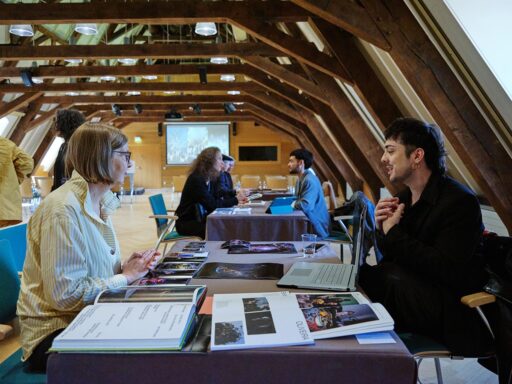
Portfolio review 2023 CCR Neumunster
La cinquième édition de Révélation(s)/ Portfolio – Plateforme – Luxembourg a eu lieu dans le cadre du 9e Mois Européen de la Photographie au Luxembourg le 10 mai 2023 au Centre de rencontres Abbaye de Neumunster.
Ont participé à cette édition du côté des artistes:
Bruno Oliveira, Diederich Manon, Reding Pit, Pol Trierweiler, Speltz Anne, Krieps Anna, Cruz Steven
Les membres du groupe d’experts pour l’édition 2023 étaient : Delphine Dumont ( directrice de Hangar, Bruxelles et de Photo Brussels Festival ), Christian Gattinoni ( critique d’art et rédacteur en chef de la revue en ligne www.lacritique.org ), Emmanuelle Halkin ( commissaire d’exposition et responsable du festival Circulations; Paris ), Felix Hoffmann ( directeur de Foto Wien ), Rui Prata (directeur de Imagao Lisboa), Gabrielle Uhl (professeur à l’Université de Budapest ) ainsi que Clelia Baldo (Venise ) et Elina Heikka (ancienne directrice du Musée de la photographie Helsinki.
Le travail des candidats a été publié dans le catalogue du Mois Européen de la Photographie Luxembourg 2023 (emoplux 2023)
portfolio review 2021
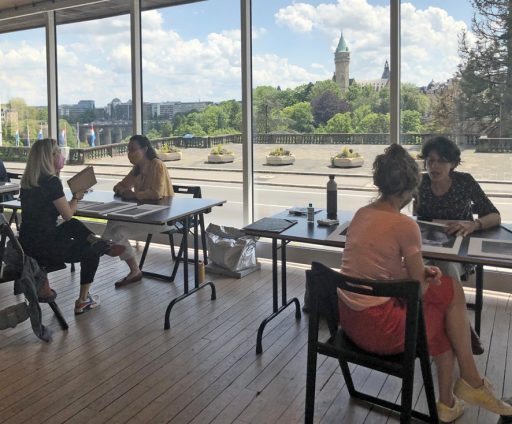
Portfolio review 2021 Casino Luxembourg Forum d’art contemporain
La quatrième édition de Révélation(s)/ Portfolio – Plateforme – Luxembourg a eu lieu dans le cadre du 8e Mois Européen de la Photographie au Luxembourg le 2 juin 2021 au Casino Luxembourg, Forum d’art contemporain.
Ont participé à cette édition du côté des artistes:
Bruno Baltzer & Leonora Bisagno, Justine Blau, Marie Capesius, Lisa Kohl, Lucas Leffler, Elshan Rozafa, Caecilia Tripp, Silja Yvette.
Les membres du groupe d’experts pour l’édition 2021 étaient : Delphine Dumont ( directrice de Hangar, Bruxelles et de Photo Brussels Festival ), Christian Gattinoni ( critique d’art et rédacteur en chef de la revue en ligne www.lacritique.org ), Emmanuelle Halkin ( commissaire d’exposition et responsable du festival Circulations; Paris ), Verena Kaspar-Eisert ( curatrice au KunstHaus de Vienne ), Bettina Leidl ( directrice de Kunst Haus Vienne ), Rui Prata (directeur de Imagao Lisboa), Claartje van Dijk (commissaire d’exposition à Foam Amsterdam) ainsi que Anouk Wies (coordinatrice générale du Cercle Cité et commissaire d’exposition).
Streaming : https://www.casino-luxembourg.lu/fr/Agenda/Revelation-s-Portfolio-Plateforme
Le travail des candidats a été publié dans le catalogue du Mois Européen de la Photographie Luxembourg 2023 (emoplux 2023)
portfolio review 2019
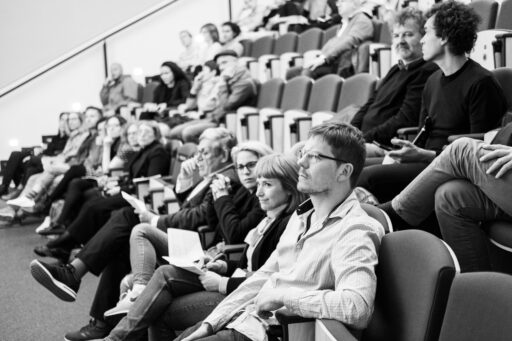
Auditorium du Cercle Cité 2019
La troisième édition de Révélation(s)/ Portfolio – Plateforme – Luxembourg a eu lieu dans le cadre du 7e Mois Européen de la Photographie au Luxembourg le 15 mai 2019, de 14h à 17h à Luxembourg.
Ont participé à cette édition: Patrick Galbats, Keven Erickson, Carole Melchior, Martine Pinnel, Véronique Kolber, Jana Hartmann, Séverine Peiffer
Les experts pour l’édition 2019 étaient : Thomas Licek (ancien directeur de Eyes-On, Mois de la Photo Vienne), Verena Kaspar-Eisert (curatrice au Kunst Haus de Vienne), Christian Gattinoni (professeur à l’école nationale supérieure de photographie à Arles et critique d’art), Branislav Stepanek (commissaire d’exposition à la Maison de la photographie de l’Europe Centrale, Bratislava), Gabriela Uhl (commissaire d’exposition en Hongrie et professeur à l’Université de Budapest), Angela Ferreira (artiste, commissaire d’exposition, ancienne directrice des Encontros da Imagem, Braga, Portugal), Audrey Hoareau (commissaire d’exposition, co-fondatrice et co-directrice de The Red Eye) ainsi que Anouk Wies (coordinatrice générale du Cercle Cité et commissaire d’exposition). Le travail des candidats a été publié dans le catalogue du Mois Européen de la Photographie au Luxembourg 2021 (emoplux 2021)
portfolio review 2017
La deuxième édition de Révélation(s)/ Portfolio – Plateforme – Luxembourg a eu lieu dans le cadre du 6eme Mois Européen de la Photographie au Luxembourg le 26 avril 2017 au Cercle Cité (Auditorium ) de la ville de Luxembourg.
Les dix candidats retenus pour présenter leur portfolio au public étaient :
Becker Sven, Dul Krystyna, Frankle Robert, Guillaume Sylvie, Lejona Andrés, Lindström Ann Sophie, Loder Boris, Ries Raoul, Wagener Daniel
Les invités experts pour l’édition 2017 étaient : Thomas Licek, directeur de Eyes On – Monat der Fotografie Wien ; Jean-Luc Soret, commissaire d’exposition à la Maison européenne de la Photographie; Christian Gattinoni, professeur à l’école nationale supérieure de photographie à Arles et critique d’art ; Alessandra Capodacqua, Florence, curatrice ; Nathalie Herschdorfer ( directrice du Musée des Beaux-Arts de Lelocle, Suisse ) ; Marion Hislen, directrice du festival Circulation(s), Paris ; Gabriella Uhl ( Budapest ) curatrice et professeur à l’université de Budapest.
Le travail des candidats a été publié dans le catalogue du Mois Européen de la Photographie au Luxembourg 2019 (emoplux 2019)
portfolio review 2015
En 2015, le groupe des experts était composé de Thomas Licek, directeur de Eyes On et Monat der Fotografie Vienne, Frank Wagner, curateur du Monat der Fotografie Berlin; Michaela Bosáková, curatrice au Central European House of Photography à Bratislava; Gabriella Uhl, curatrice indépendante à Budapest et membre du comité de Fotohonap – Hungarian Month of Photography; Jean-Luc Soret, commissaire d’exposition à la Maison européenne de la photographie Paris ; Christian Gattinoni, enseignant à l’ENSP d’Arles, rédacteur en chef de lacritique.org, critique d’art; Rui Prata, fondateur et ancien directeur du Museu da Imagem, Porto.
Ont présenté leur travail au jury le 22 avril 2015 (14h-17h) au Centre Culturel de Rencontre Neimënster dans le cadre du Mois Européen de la Photographie au Luxembourg: Bruno Baltzer & Leonora Bisagno , Justine Blau, Laurianne Bixhain, Eric Chenal, Sebastien Cuvelier, Serge Ecker, Paul Gaffney, Carine & Elisabeth Krecké, Anna Krieps , Neckel Scholtus
Le travail des candidats a été publié dans le catalogue du Mois Européen de la Photographie Luxembourg 2017 ( emoplux 2017 )
à propos de l’association
Le Mois européen de la photographie Luxembourg (EMoPLux) est organisé tous les deux ans par Café-Crème asbl depuis 2007 en collaboration avec les villes-partenaires, membres du réseau EMoP asbl (European Month of Photography). L’association est dirigée depuis 1984 par Paul di Felice et Pierre Stiwer, assistés de Krystyna Dul (contact: bureau@cafecreme-art.lu)
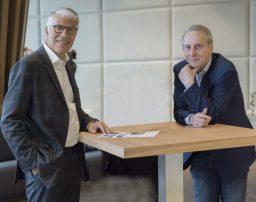 Lancé avec l’idée de fédérer quelques institutions-clés du Luxembourg autour de la promotion de la photographie contemporaine, le festival a pris de plus en plus d’envergure pour englober aujourd’hui la quasi totalité des institutions du pays. Le Musée d’Art moderne Grand-Duc Jean (Mudam), le Musée National d’Histoire et d’Art (MNHA), le Casino Luxembourg – Forum d’art contemporain, le CCR Abbaye de Neumünster, l’espace d’art Cercle-Cité, la Villa Vauban – Musée de la ville comptent parmi les partenaires réguliers. On peut y rajouter les galeries d’art privés comme Nosbaum & Reding, Valerius et Reuter-Bausch.
Lancé avec l’idée de fédérer quelques institutions-clés du Luxembourg autour de la promotion de la photographie contemporaine, le festival a pris de plus en plus d’envergure pour englober aujourd’hui la quasi totalité des institutions du pays. Le Musée d’Art moderne Grand-Duc Jean (Mudam), le Musée National d’Histoire et d’Art (MNHA), le Casino Luxembourg – Forum d’art contemporain, le CCR Abbaye de Neumünster, l’espace d’art Cercle-Cité, la Villa Vauban – Musée de la ville comptent parmi les partenaires réguliers. On peut y rajouter les galeries d’art privés comme Nosbaum & Reding, Valerius et Reuter-Bausch.
Mentionnons également la Bibliothèque nationale, les Archives nationales, la Fondation de l’Architecture et de l’ingénierie (LUCA) parmi les participants occasionnels.
A Dudelange, le Centre national de l’audiovisuel (CNA) et la Galerie Nei Liicht et Dominique Lang appartenant à la ville. À Clervaux, c’est l’association de la commune qui participe à travers son association Clervaux, Cité de l’Image; à Ettelbruck: le CAP (Centre des Arts Pluriels) à Ettelbruck; à Esch/Alzette: Konschthal Esch ( Espace d’art Esch ). Le Mois européen de la photographie a pu associer aussi périodiquement l’Arsenal de Metz (Lorraine), l’espace Beda de Bitburg (Allemagne) ainsi que tout récemment l’Académie des Beau Arts de Trêves à ses projets.
café-crème asbl: historique
1984 :
Café-Crème asbl se constitue en association à but non lucratif et se lance dans la publication d’un magazine expérimental dans le but de promouvoir les jeunes talents émergents luxembourgeois ( designers, photographes, peintres, architectes ) dans un contexte cosmopolite avec une scène artistique internationale en constante évolution avec des acteurs majeurs dans le domaine de l’art contemporain.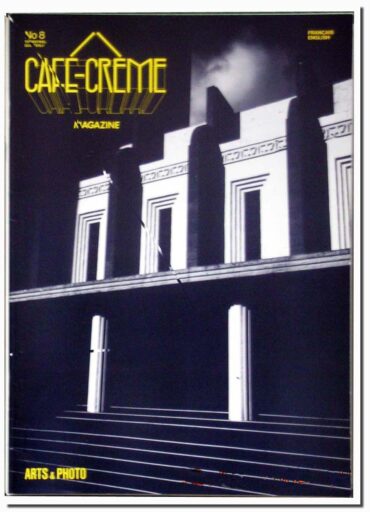
Profitant des possibilités alors émergentes de la publication assistée par ordinateur, l’association – les membres fondateurs sont Paul Bretz, Paul di Felice et Pierre Stiwer – publie un magazine design qui se transforme en un magazine d’art contemporain en mettant l’accent particulier sur la photographie après quelques numéros. Il est distribué à l’échelle internationale dans les boutiques du musée et dans des librairies choisies en Europe ainsi qu’aux États-Unis pendant une courte période. C’est le tout premier magazine publié par ordinateur au Luxembourg.
1993 :
Café-Crème est commissaire d’une série d’expositions à la galerie municipale de Dudelange (galerie Nei Liicht) présentant les nouvelles tendances de la photographie contemporaine d’Allemagne, des Pays-Bas et du Luxembourg. En tant que participante à l’événement Luxembourg Capitale européenne de la culture (1995), l’association gère une grande exposition intitulée “Paysages : Lieux et et Non-lieux” en collaboration avec le Centre d’art Nei Liicht et le CNA (Centre national de l’audiovisuel) à Dudelange. Café-Crème poursuivra plus tard son partenariat avec Nei Liicht avec des expositions individuelles telles que « Tempi in scena ( 2001) » et « Tempi osceni ( 2009 ) » (co-organisée avec Alessandra Capodacqua, Studio Marangoni, Florence).
La galerie municipale de la ville de Dudelange joue à cette époque un rôle majeur dans la promotion de l’art contemporain au Luxembourg et est une institution de premier plan dans le pays pour la photographie contemporaine.
1994-1997 :
L’association est parmi les toutes premières sociétés à mettre en place un site internet au Luxembourg (1994) dans le cadre de “Luxembourg, Ville européenne de de la culture.
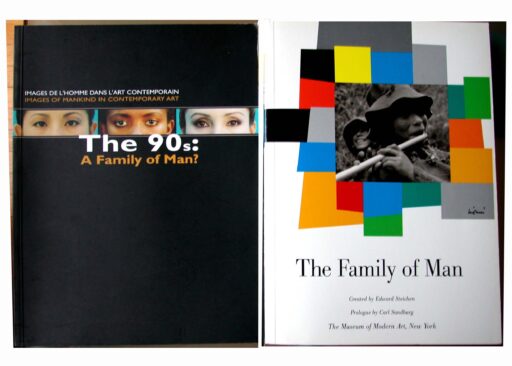
Exhibition catalogue and the classic Family of Man catalogue
L’espace d’exposition Casino Luxembourg – Forum d’Art Contemporain (créé en 1995) – accueille en 1997 la première exposition internationale sur la photographie contemporaine au Luxembourg « The 90s – A Family of Man ?» organisée par Paul di Felice et Pierre Stiwer. L’exposition contribue substantiellement à familiariser le grand public luxembourgeois avec la photographie en attirant l’attention sur les possibles correspondances – ou leurs absences – entre « The Family of Man » de Steichen ( exposition permanente au château de Clervaux ) et des approches contemporaines sur le même sujet.
Rineke Dijkstra, Nan Goldin, John Coplans, Christian Boltanski, Thomas Struth, Beat Streuli font partie de cette exposition qui compte parmi les grands succès populaires. L’année précédente, l’association a publié le dernier numéro de son magazine. Le sujet principal est Photographie après photographie inspiré du texte d’Hubertus von Amelunxen qui prévoit la fin de la photographie telle que nous la connaissons. La technologie numérique et la philosophie post-moderne changent radicalement notre approche de la vérité et la notion d’art d’avant-garde.
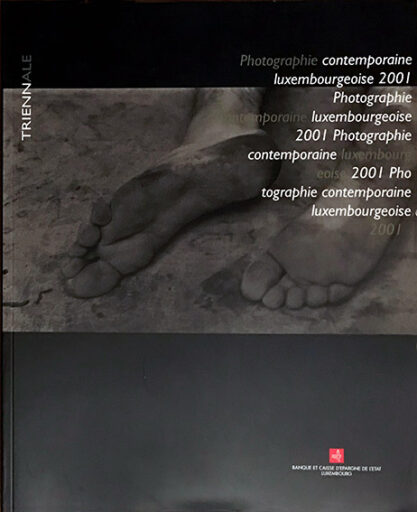
Publication on contemporary photography in Luxembourg; publisher BCEE
1998-2006 :
Durant cette période, la Banque et Caisse d’Epargne de l’Etat (BCEE) promeut activement la photographie et lance une collection centrée sur les oeuvres d’Edward Steichen ainsi que sur la photographie contemporaine. L’association est invitée à concevoir un livre sur les photographes contemporains au Luxembourg et un catalogue sur la collection grandissante. En même temps, l’espace d’exposition de la banque ” Am Tunnel” permet d’exposer la collection de l’institution – les oeuvres vont de Cindy Sherman à Helmut Newton – tout comme les artistes/photographes luxembourgeois les plus contemporains.
Durant cette période, l’association publie trois volumes sur la photographie contemporaine en Europe : Les Trahisons du modèle, Le Bâti et le Vivant, Apparemment léger.
Le ministère de la culture met à notre disposition sur plusieurs années (2000 – 2006) un espace d’exposition, la Chapelle du Rham. Pendant cette période, l’association est en mesure de développer des expositions à grande échelle même si elle doit compter sur du personnel externe pour la manipulation des œuvres – l’aide est fournie par les institutions d’art voisines qui sont prêtes à aider, notamment le Musée national d’art moderne ou le Casino Forum d’art contemporain.
Il y a un certain espoir d’obtenir un espace d’exposition à plus grande échelle pour l’art contemporain, mais une rénovation prévue du bâtiment historique dans la zone protégée du plateau du Rham met fin à ce processus.
L’époque s’avère néanmoins bénéfique pour initier un festival appelé « Les Semaines européennes de l’image » alors soutenu par l’Institut culturel français de Luxembourg en association avec Christian Gattinoni qui enseigne la photographie à l’ENSP d’Arles (France).
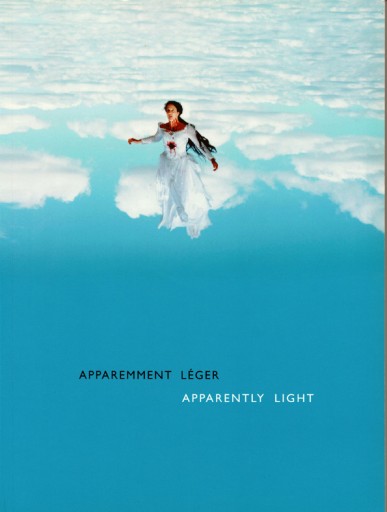
Volume 3, 2004
2006-2010 :
La Chapelle du Rham accueille trois grandes expositions internationales consacrées principalement aux artistes scandinaves, italiens et français dont aussi – en partenariat avec le Casino Forum d’art contemporain – l Mutations 1, la première exposition d’Emop (Réseau du mois européen de la photographie).
L’association démarre un projet curatorial à long terme au sein du nouveau réseau European Month of Photography (emop) (une joint-venture de festivals européens de photographie à Berlin, Rome, Vienne, Moscou, rejoints plus tard par Bratislava, Budapest, Ljubljana et Athènes) sur différents sujets liés à l’évolution récente de la photographie. Les membres fondateurs sont la Maison européenne de la photographie à Paris, Kulturprojekte Berlin et Musa Wien ( Museum auf Abruf de la Ville de Vienne ). Les expositions intitulées Mutations 1, 2, 3 sont des vitrines de l’hybridation de la photographie et de l’art vidéo et témoignent de la migration vers l’internet.
S’appuyant sur d’anciennes bonnes relations avec des institutions et musées locaux au Luxembourg tels que Casino Art Forum, le Mudam ( Musée d’art moderne ) ou Carré-Rotondes, les œuvres d’artistes/photographes majeurs (Philippe Ramette, Ori Gersht, David Claerbout, Edmund Clark, Rob Hornstra…) sont exposés dans ces espaces d’art.
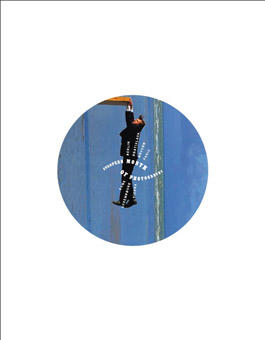
Mutation 1 European Month of Photography 2006
Café Crème participe en 2007 avec « Différences partagées » (en collaboration avec Nei Liicht) à la deuxième édition de « Luxembourg et Grande Région Capitale Européenne de la Culture » et présente, entre autres, des œuvres in situ de l’artiste luxembourgeois Marco Godinho.
Le Musée national d’Art et d’Histoire et l’espace d’art de la ville de Luxembourg (Cercle Cité) deviennent des partenaire majeurs en accueillant des expositions axées sur le portrait et le paysage en photographie contemporaine. Une exposition telle que “Modèles modèles” marque le début d’un échange curatorial sur la photographie en relation avec les arts au Luxembourg, relation qui continue jusqu’à aujourd’hui.
De nouveaux espaces d’art innovants comme l’Abbaye de Neumunster permettent de développer des projets d’expositions en plein air.
2009-2013:
Le Casino Luxembourg continue d’accueillir des expositions thématiques telles que Great Expectations – Contemporary Photography looks at today’s Bitter Years (2009 ) ou Second Lives : Jeux Masqués et autres Je (2011).
Au cours de ces années, l’association organise également plusieurs expositions pour des entreprises privées ou les assiste avec l’expertise nécessaire pour accueillir des expositions dédiées à la photographie ou aux arts visuels dans leurs locaux (Arendt & Medernach, BGL-Fortis, Banque de Luxembourg).Le cabinet d’avocats Arendt & Medernach s’implique désormais pleinement dans les activités de l’association et initie une nouvelle dynamique autour du festival en suggérant l’idée d’un prix européen de la photographie qui devient le European Month of Photography Arendt award.
2014-2015 :
L’association est fière de ses trente années d’activité régulière et édite un magazine A3 inspiré de sa première publication avec des textes d’experts internationaux de la photo qui sont ses compagnons de longue date. Anniversary issue 2014 Anniversary issue 2014.
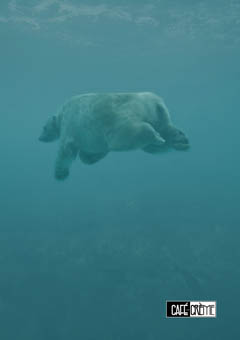
Anniversary issue 2014
Emop décide en 2015 de devenir une structure juridique hébergée au Grand-Duché de Luxembourg.
Bien que les huit villes membres du réseau emop subissent l’impact d’un environnement culturel et politique en mutation, les huit institutions d’Athènes, Berlin, Bratislava, Budapest, Ljubljana, Luxembourg, Paris et Vienne s’engagent à poursuivre et à développer leurs relations autour de projets communs. Néanmoins Athène, Budapest et Ljubljana quittent le réseau et seront remplacés par le Festival photo de Bruxelles et Imago Lisboa au Portugal.
La ville de Luxembourg devient sponsor principal du festival et les espaces d’expositions de la ville tels que le Cercle Cité, le Musée de la ville, la Villa Vauban deviennent des participants réguliers du festival photo Emoplux.
L’association étend également sa collaboration à des institutions voisines comme l’Arsenal centre d’art de Metz (Lorraine / France) et Haus Beda à Bitburg (Allemagne) en période de festival.
Les locaux du Cercle Cité accueillent désormais la lecture de portfolio qui est un événement public pendant le festival photo. Il est destiné à offrir aux artistes locaux ou régionaux l’opportunité de rencontrer des experts internationaux de la photographie et des commissaires de grands festivals.
Profitant de ses connexions européennes, l’association offre des opportunités d’exposition aux photographes luxembourgeois à l’étranger.
2016-2023 :
L’association gère son 8eme et 9ème Mois européen de la photographie avec la participation de la quasi-totalité des partenaires institutionnels du pays ( MNHA ; Mudam, Casino art forum, Neimenster, CNA …) et en étroite collaboration avec le festivals de Berlin, Bruxelles, Lisbonne, Paris et Vienne sur le thème de de la nature et de l’identité.
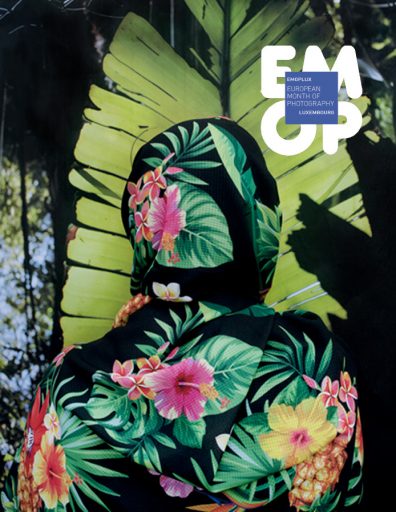
Catalogue Emop 2021
Le festival s’étend pour l’édition de 2023 à la ville voisine de Trier (Allemagne) “Europäische Kunstakademie.
